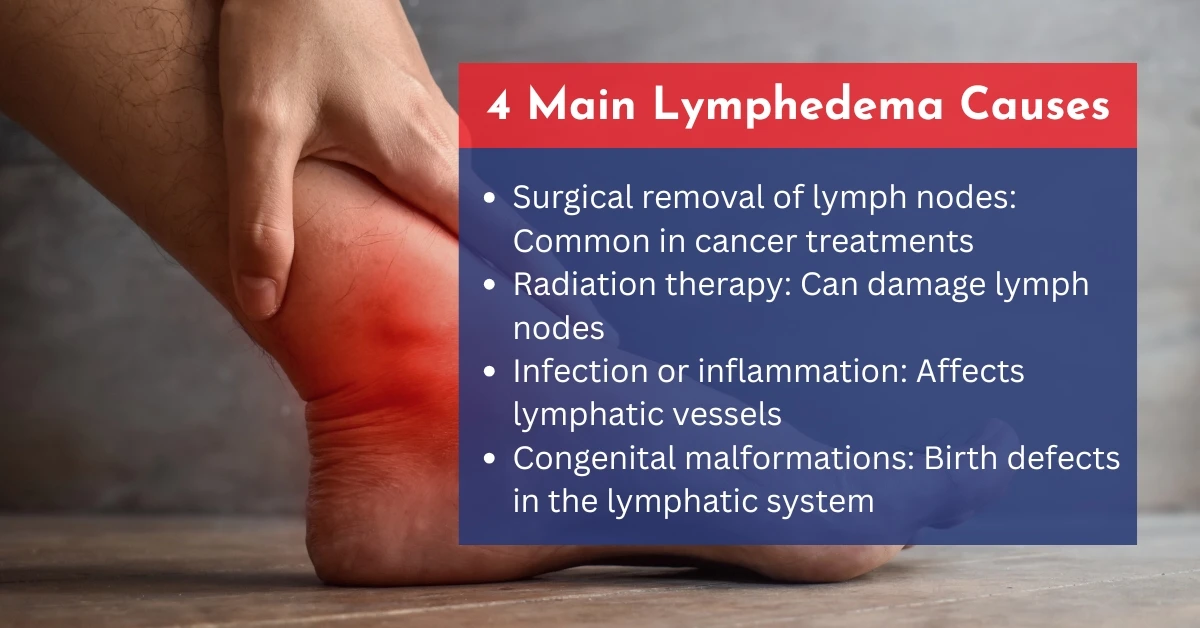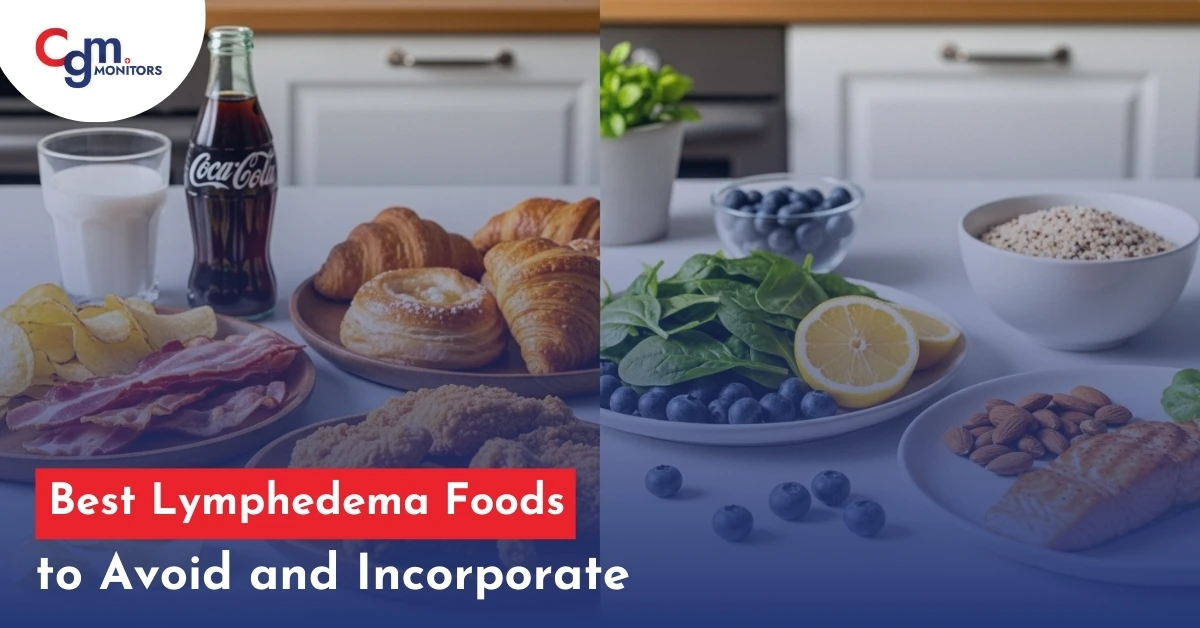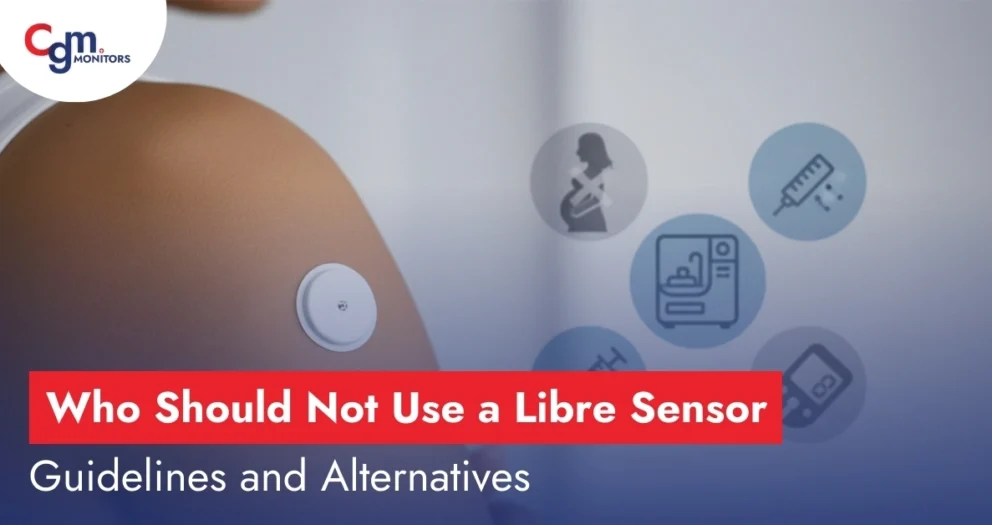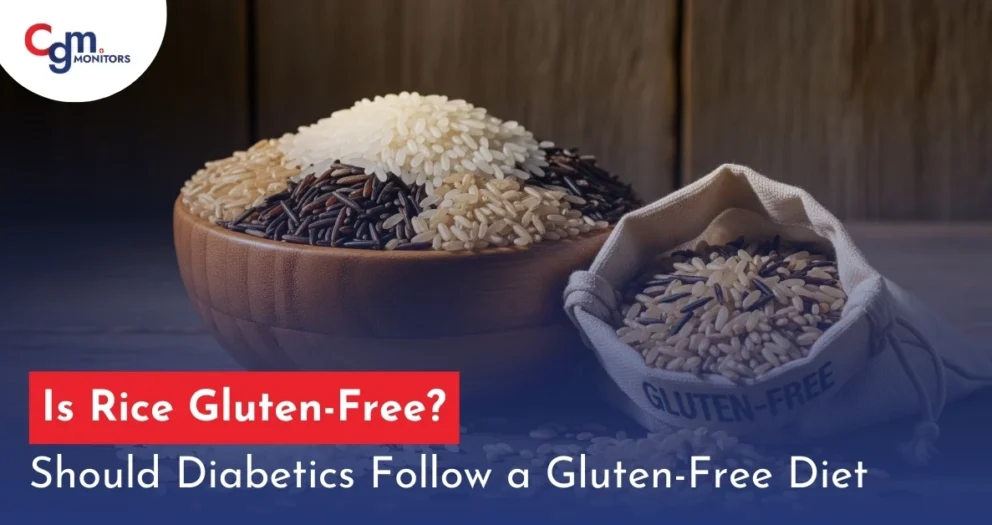Table of content
Introduction
Lymphedema is a condition where lymph fluid builds up in the tissues, causing swelling, most commonly in the arms and legs. This happens when the lymphatic system is affected, either from surgery, radiation, infection, or genetic issues. Kidney issues may also be an underlying cause contributing to edema, eventually leading to lymphedema, which causes discomfort and may lead to permanent tissue damage if not managed properly. Here we have discussed a complete lymphedema diet plan, including lymphedema foods to avoid, such as sugar, refined grains, starchy foods, processed foods, oily foods, red meat, and more, along with a list of foods you may incorporate in your diet while managing or preventing lymphedema.
4 Main Causes of Lymphedema
Lymphedema typically results from hindrance in the lymphatic system. Causes can include:
- Surgical removal of lymph nodes (common in cancer treatments)
- Radiation therapy (damage to lymph nodes)
- Infection or inflammation of lymphatic vessels
- Congenital malformations of the lymphatic system

Foods to Avoid with Lymphedema
The following are some of the things to avoid with lymphedema:
1. Processed Foods
Processed foods are often high in sodium, which can lead to fluid retention and worsen edema (general swelling).
Examples to Avoid: Fast food, canned soups, pre-packaged snacks, and deli meats.
Why: Excess sodium intensifies swelling by drawing in more water to the tissues.
2. Fried and Heavily Spiced Foods
Fried and spicy foods can trigger inflammation and stress on the body, which deteriorates lymphatic flow.
Examples to Avoid: Fried chicken, fries, spicy chips, and heavily spiced curries.
Why: These foods are often high in unhealthy fats and salt, leading to increased swelling.
3. Sugary Foods and Drinks
High sugar intake promotes inflammation and can contribute to weight gain, which is harmful for lymphedema management.
Examples to Avoid: Sodas, candies, pastries, and sugary snacks.
Why: Sugar increases inflammation and fluid retention, aggravating symptoms of lymphedema.
4. Pork and Red Meat
These meats are high in saturated fats, which increase inflammation and can hinder proper lymphatic circulation.
Examples to Avoid: Pork chops, sausages, beef steaks, and fatty cuts of lamb.
Why: Saturated fats contribute to inflammation and can increase the burden on the lymphatic system.
5. White Flour and White Bread
Refined carbs like white bread can cause your blood sugar go high. Continued accumulation of sugar in your blood stream contributes to inflammation and increased fluid retention.
Examples to Avoid: White bread, pasta made with white flour, and pastries.
Why: They cause wild sugar absorption, which contributes to swelling.
6. Carbonated Drinks and Alcohol
Carbonated drinks can cause bloating (feeling of abdominal fullness), and alcohol can dehydrate the body, worsening fluid retention.
Examples to Avoid: Soda, beer, wine, and cocktails.
Why: Alcohol can interfere with the body’s ability to manage fluid balance, and carbonation can cause discomfort and bloating.
Foods to Incorporate for Lymphedema Relief
Following lymphedema diet to lose weight may incorporated to manage the condition, however, do not rely on this alone, instead make sure you consult a doctor at your earliest:
1. High-Protein Foods
Protein is essential for tissue repair and maintaining the integrity of the lymphatic system. It also helps reduce fluid retention and promotes overall lymphatic health.
Sources: Chicken, turkey, fish, beans, tofu, and low-fat dairy.
Why: High-protein foods reduce inflammation and support tissue regeneration, which is critical for those with lymphedema.
2. Antioxidant-Rich Foods
Antioxidants fight inflammation, boost immune health, and help detoxify the body.
Sources: Berries (blueberries, strawberries), leafy greens (spinach, kale), and bell peppers.
Why: They help combat oxidative stress, a common factor in swelling and lymphedema progression.
3. Starchless Vegetables
These vegetables are low in calories but high in fiber and nutrients, supporting healthy digestion and reducing bloating, which can aggravate edema.
Sources: Cucumbers, zucchini, bell peppers, and leafy greens.
Why: Starchless vegetables are great for maintaining a healthy weight, a critical factor in managing lymphedema.
4. Fiber-Rich Foods
Fiber is key for digestive health, which is important for reducing swelling. It aids in preventing constipation, a common issue that can worsen lymphedema.
Sources: Whole grains, oats, lentils, and vegetables like sweet potatoes.
Why: High fiber promotes proper digestion and reduces fluid retention.
5. Probiotics (Yogurt)
Yogurt contains probiotics that can help balance gut health and reduce inflammation, which is important for lymphatic function.
Sources: Greek yogurt, kefir, and fermented vegetables.
Why: Probiotics support the immune system and help manage inflammation, both critical for those with lymphedema.
6. Healthy Fats
Healthy fats reduce inflammation and support cell repair, crucial for the proper functioning of the lymphatic system.
Sources: Olive oil, avocado, nuts, and fatty fish (salmon, mackerel).
Why: These fats help reduce inflammation and support lymphatic fluid flow.
Lymphedema Home Remedies & At-Home Therapy
If you’re living with lymphedema or are at risk, certain home remedies and therapies can help manage swelling:
1. Pneumatic Compression Devices
Using a pneumatic compression device, like Bie more freely. These devices work by alternating pressure on the limbs, aiding in fluid remoo Compression Devices, can provide relief by applying pressure to the affected area, encouraging lymph fluid to movval.
The compression pumps and Bio Compression garments have a different number of chambers. Depending on the severity of your lymphedema, you may choose a device or a garment. The more complex the situation is, the more chambers you require for a gradient compression.
2. Elevation
Raising the affected limb (arms or legs) above the heart helps reduce fluid accumulation. This technique may only work in the stage 1 of lymphedema.
3. Massage Therapy (Manual Lymphatic Drainage)
Gentle massaging techniques can help stimulate lymph flow and reduce swelling. A certified massage therapist or a certified lymphedema therapist should perform this.
4. Compression Garments
Wearing compression sleeves, stockings, or even socks help prevent fluid buildup in the limbs and encourages proper circulation.
5. Exercise
Regular, low-impact exercise like walking, swimming, or yoga can help promote healthy circulation and lymphatic function. Remember, healthy routine is the key to preventing or managing multiple health conditions.
Treatment Advice & General Guidelines
- Maintain a Healthy Weight: Excess weight can put additional strain on the lymphatic system and worsen lymphedema.
- Stay Hydrated: Drink plenty of water to help flush toxins from the body and prevent dehydration, which can worsen swelling.
- Avoid Tight Clothing: Tight clothing can restrict lymphatic flow and worsen fluid retention.
- Use Skin Care Products: Keep skin hydrated to prevent dryness and cracks, which can lead to infections in lymphedema-affected areas.
A study shared by the cancerblog Mayoclinic shows that Lymphedema increases the chances of all common skin cancers. Thus, it should be treated properly, and patients should undergo regular cancer screenings.
Conclusion
To conclude, it is stated that lymphedema and swelling can be controlled through eating, as lymphedema may be managed with the help of proper foods. Try to avoid salty food, processed and sugary products, which may aggravate fluid retention. Rather, concentrate on incorporating fruits, vegetables, lean proteins, whole grains, and healthy fats to aid your lymphatic system.
An overall health improvement can also be achieved by staying hydrated, reducing alcohol consumption, and selecting anti-inflammatory foods. By making these intelligent food choices, you will be able to have more control over lymphedema and have an easier time feeling healthier every day.
Frequently Asked Questions
Will major weight loss help lymphedema?
Weight loss with the help of healthy diet and exercise shall help you with lymphedema, especially at earlier stages. Moreover, lesser weight means lesser strain on lymphatic system.
How to reduce lymphedema swelling in the arm?
Light exercise, healthy diet, massage, and use of compression sleeve for arm, can help reduce swelling in the arm. Elevation may also help (during stage 1 only). Always consult your doctor before taking any medical action.
What are the stages of lymphedema?
There are 4 stages of Lymphedema; stage 0 (no visible swelling), stage 1 (mild swelling), stage 2 (persistent swelling with beginning of fibrosis), and stage 3 (extensive swelling). The stage 3 is also known as elephantiasis.
Can eating protein prevent edema?
Lack of protein is a potential factor behind edema (general swelling). A non-inflammatory and protein (not from red meat) rich diet combined with exercise may only decrease the probability of edema.
Does eating garlic cause edema?
No, garlic is generally considered anti-inflammatory and may actually help reduce swelling.
By making smart dietary choices and utilizing at-home therapies like pneumatic compression devices, you can manage lymphedema and potentially reduce symptoms. A well-balanced diet full of high-protein, antioxidant-rich foods combined with appropriate lifestyle changes can go a long way in managing this condition. Always consult with your healthcare provider for tailored advice.
Disclaimer: This blog is for informational purposes only and does not constitute medical, legal, or professional advice. While we strive for accuracy, errors or omissions may occur.







Write a comment
Your email address will not be published. All fields are required